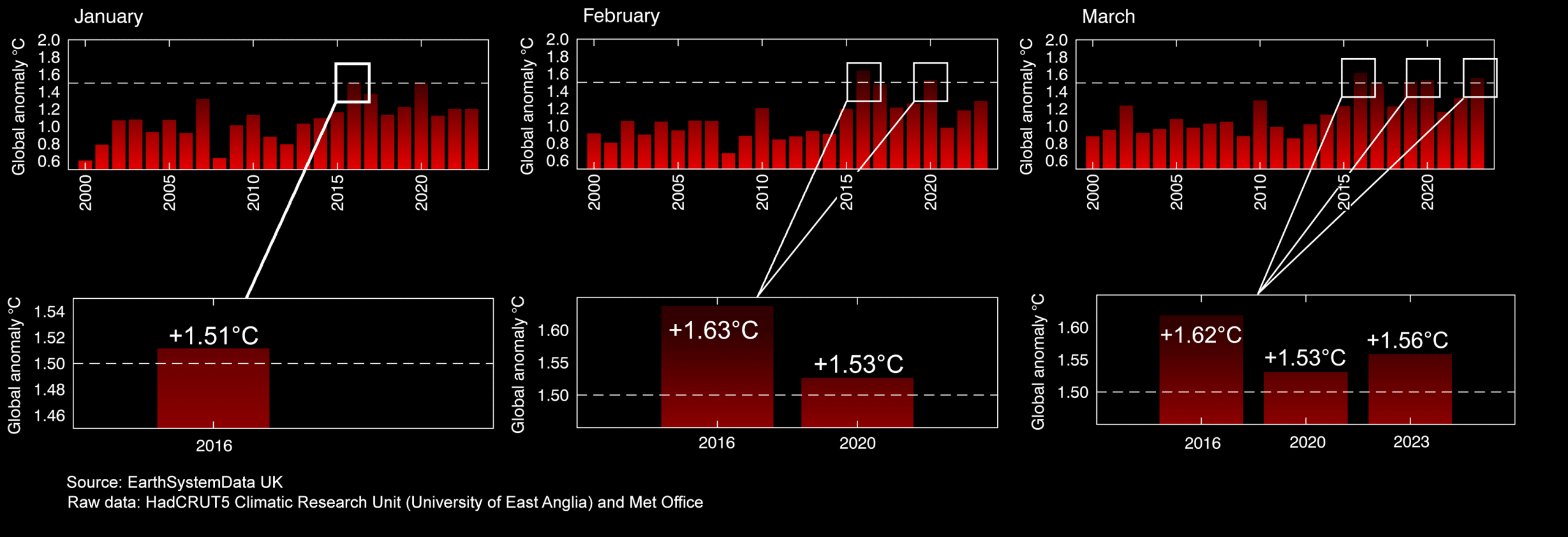An innovative examination of the preeminent HadCRUT5 global temperature record reveals that a grand total of six months, encompassing the month of March in the year 2023, have surpassed the threshold of 1.5°C global warming. This threshold is directly associated with the United Nations Framework Convention on Climate Change (UN-FCCC) 2015 Paris Agreement.
Conducted by EarthSystemData UK, the assessment of HadCRUT5 – a preeminent global dataset utilised by the United Nations to monitor the global climate – involved reinterpreting the data relative to its pre-industrial average of 1850-1900. This approach aligns with the methodology used by the United Nations to determine the 1.5°C threshold.
The months that have experienced warming beyond the 1.5°C mark are as follows: January 2016 [+1.51°C], February 2016 [+1.63°C], March 2016 [+1.62°C]; February 2020 [+1.53°C], March 2020 [+1.53°C]; and March 2023 [+1.56°C]. These findings signify the initial extended periods during which the global temperature has surpassed the established ‘safe warming limit’ defined by the UN-FCCC. However, it is important to note that these findings do not indicate a formal violation of the legally binding target set by the Paris Agreement. To confidently attribute the breach to human activities, a multi-year average exceeding +1.5°C is required.
“Nevertheless, the initial data points we observe may eventually constitute an extended breach. The evidence is unequivocal – in addition to the recurrence of climate-related disasters, the numbers now lay before us, delivering a clear warning,” stated Dr. Craig Wallace, the analyst responsible for conducting the study. “The years 2016, and to some extent, 2020, were influenced by potent EL Niño conditions, which elevated the planet’s temperature and contributed to the carbon-driven warming caused by human activities. March 2023’s temperature anomaly is exceptional, as it occurred during the latter stages of a La Niña phase, which inherently cools the planet, partially offsetting the human-induced warming. This suggests that the actual human-driven heating in March surpassed the reported +1.56°C.”






